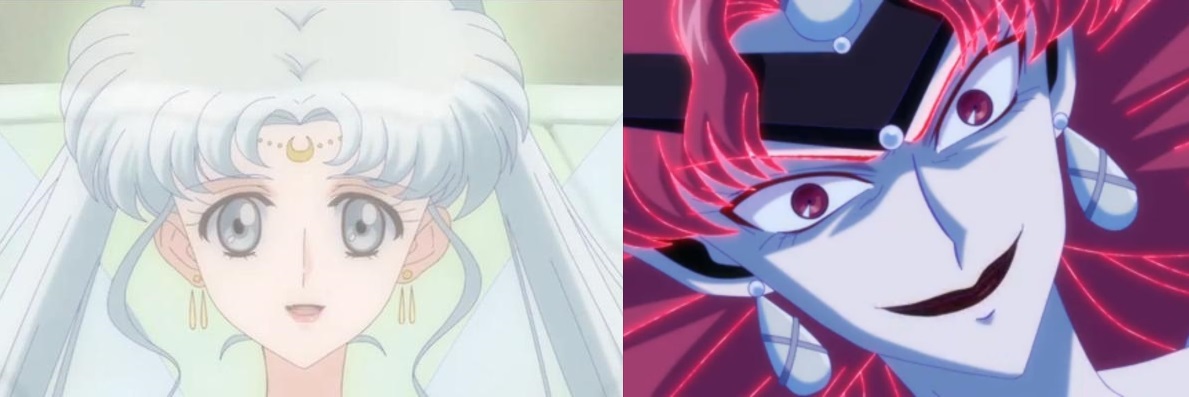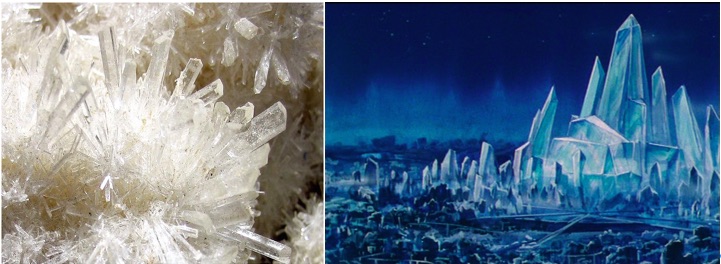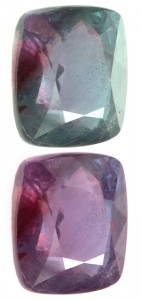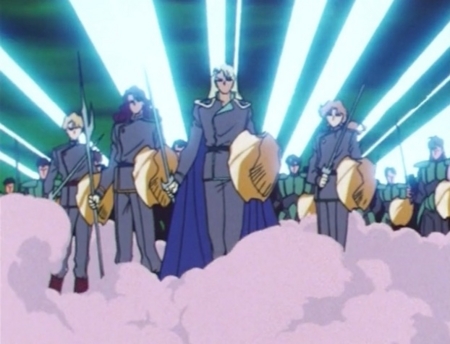Whether you look at the anime or manga or even the live-action series, despite how important they were to setting up the story behind the Sailor Moon series, Queen Serenity and Queen Metalia both get incredibly minor roles with very little explained about their past or motivations. What’s worse, the Serenity name is passed onto her daughter, Princess Serenity, who then passes it on to her daughter, Princess Usagi Small Lady Serenity. But is there more to these characters than meets the eye? I think so, and that’s what we’re here to look into!
Queen Serenity
Starting with the Serenity line, it’s fortunately pretty easy to track down the meaning and history behind her name, though most of it is probably connected more to Princess Serenity / Usagi more-so than her mother. The most obvious and meaningful connection is the Greek myth of the relationship between Selene, the moon goddess, and the mortal Endymion.1 This gets us partly to the name “Serenity,” though we have one (or possibly two!) other sources of inspiration, all inspired by the Greek connection to the moon.
We all know that Ms. Takeuchi had a strong attachment to astronomy during her developmental years and did a lot of research when making the series, so it should come as no surprise that Usagi’s royal name would be connected to a basin on the Moon, the Mare Serenitatis — or, in English, the Sea of Serenity.2 This is also, incidentally, where the Moon Kingdom was said to be located and where the Sailor Team head in both the anime and manga to consult with the memory of Queen Serenity among the ruins of the Silver Millenium.
So then, what is this third possible reference? Though less of a connection to the late Queen Serenity herself, there seems to be a strong implied connection between Neo-Queen Serenity, Crystal Tokyo, and the mineral known as selenite.3 Selenite is most often clear, though can appear white, pearl, or a variety of other colors depending on impurities. Most notably, it often is found in columns and in tubular designs, not much unlike the designs of the Crystal Tokyo Palace and the Silver Crystal.
Queen Metalia
Like the Four Kings, the connections to geology are a lot more obvious with the Dark Kingdom. There are two notes about the dual monarchy — Queen Beryl and Queen Metalia — that are not obvious at first glance, however. First off, while the most obvious connection with Queen Beryl is to the gemstone beryl.4 However, it’s a little more complicated than that. You see, the Japanese word for queen is 王女 (oujo; queen) though Ms. Takeuchi tends to write the titles (e.g., princess, queen, etc.) out phonetically, such as クイーン (kui-n; queen). However, the titles for both Queen Beryl and Queen Metalia are misspelled in Japanese, and are written as クイン (kuin; no meaning). Why is that?
Well, it’s to give it a double meaning. While it still sounds reasonably close to queen (and is treated canonically that way), it also looks similar to クリソ (kuriso; chryso). So actually, Queen Beryl’s name is more strongly connected to chrysoberyl.5 Just by looking, you can see that this stone much more closely matches the color scheme associated with Queen Beryl, so it’s pretty clear that this is more likely a closer source for her inspiration than normal beryl.
That means that the chryso- connection probably also remains true for Queen Metalia as well, since her name is also written in the same (misspelled) manner. Since here’s no substance known as metalia, we can rule out any special connection there other than it simply being a reference to metal, but with the chryso- prefix attached,6 it modifies the meaning to the metal, gold.
What that ultimately leaves us with is the villain, an evil queen born of hatred from the sun and named in honor of the mineral gold fighting against the Silver Millenium, ruled by the queen of the moon.
Though we never did learn as much about the motivations behind Beryl, Metalia, and the formation of the Dark Kingdom (outside of the musical, of course!) as I would have liked, it’s nice to know that Ms. Takeuchi went through quite a bit of effort to put a little more detail into their names than you’d initially assume. I have to admit, she’s pretty tricky!
References:
- See the relationship between Selene and Endymion (Wikipedia) ↩
- See Mare Serenitatis ↩
- See Selenite (Wikipedia) ↩
- See Beryl (Wikipedia) ↩
- See Chrysoberyl (Wikipedia) ↩
- See Chryso- (Wikitionary) ↩





So according to the Materials Collection, Sailor Galaxia’s image gemstone is Alexandrite (a type of chrysoberyl) – both colours of it are represented in her bracelets. Makes it feel like she’s gained Beryl’s power through Chaos somehow x.X.
How many mental abacus tables did you flip over this
This would make awesome sense. The Greek χρυσό (ancient Greek χρυσός) meaning gold, the metal linked to the Sun and Metalia originating from the Sun and causing abnormal solar phenomena in the manga. In the ancient astrological scriptures the Sun is always depicted as generally positive in its natural state (not maltreated by other astrological factors), except when any of the remaining 6 stars (what we now call planets, including the Moon) would be to close to it (roughly within 15 degrees of zodiacal longitude on both sides of the Sun) the Sun influence is malefic to such star. Such star during this period is refferred to as combust, because it is invisible in the sky, as the shining light around the Sun overexposes any smaller point of light around it. This is one of the canonical corruptions of a star (“planet”) regularly caused by the Sun. With the Moon this moment results in a waning to the invisibility and waxing again t a new Moon each month when the fast-traveling Moon passes through the Sun. The Sun being the male authority, father, and the king, the Moon being the feminine mother, and the queen. This pivotal soli-lunar relation was not utilized that much in Sailor Moon though. It was only slightly hinted, but easy to overlook if you’re not familiar with it. And in modern western astrology (which I believe we can say was the only western astrology available in Japanese in the 1990s) it was much downplayed if you could even read about the combustion. But the Chino-Japanese astrology had that solar aspect as well, although not in the oversimplified form of the popular books about it. Takeuchi was interested in both Western and Chinese astrology, and while Japanese academic writing on those topics was definitely inferior to European and Chinese materials, if she was persistent in digging, I’m sure she could have found that. Though we know the solar element was downplayed in favor of the conspicuous absence of the classical pivotal (to all cosmologies around the globe in all eras) Sun-Moon relationship. Either for marketing reasons or personal storydbuilding choices.
I am not fully convinced of the “chrysometal” reading proposition. Chrysometal gives only a company name in google search. I can’t find a “chrysometallic” (which seems to be an actual word) much too. That would still be okay though if it would be the only problem – as we’re talking about engrish and madeup words here. The fact that it requires to swap 2 katakana characters for different ones is more problematic. Changing katakana N to katakana SO which can be confused by foreigners, children or in a small or illegible font (while not as easily in the handwriting) is not the same as swapping, say misspelling KA in place of KO. I vs RI are even less visually similar, but indeed in rare situations could be misread as well, so the idea is not outrageous. Did she ever used something like that? Or did any manga author used swapping characters not based on similarity of sound but rather based on visual similarity of the characters, not as a plot point in some mystery like decoding a secret message, but in the personal names, etc.? There is a lot of puns in Sailor Moon, especially in monsters of the week, but is it ever visual misspeling pun rather than “SOUNDS similar to”?
Someone commented that it makes Galaxia’s crystal connected to Beryl. What is actually more striking (with this kuin/chryso theory permitted) is that it makes more sense why Helios/heliodore (“the stone of the Sun”), such important character on the good guys side was just a type of Beryl, which would be more suited for a gem-named minion of this 1st season Level-2 villain boss (and now also with chrysometal eg. gold itself of Metalia heself, the Level-1 villain boss). Both are connected to the Sun – Metalia being the “Sun is bad, a thing not worth a senshi status that would be on par with Sailor Moon, but a dehumanized antithesis of the whole saior senshi thing), and Helios appears in the much later arcs as a solar astrological symbolism actually given some form of “on par with senshi” due importance. The Sun in the manga was rewrited, its story retold and the solar connection of Metalia never mentioned again – perhaps utilizing the fact that it was written in a way that could later be conviniently ignored, as well as making Mamoru’s strange status of being a zodiacal Leo, so his astrological ruling star would be the Sun, and the natural universal lore of king/god of the Sun and queen/goddess of the Moon as their mythical love story not longer just “no, he’s actually the Earth senshi equivalent, a chtonic guardian of this planet” but actually connected with Sun through additional character of Helios. In traditional astrology and numerology there is no planet Earth assigned to anything or any date of the year per se, as the Earth is actually the point of reference of the horoscopic geocentric/classical astrology. The Earth appears among other “astrological” planets only in physiognomy (face reading and face typology) and palmistry (hand reading) which are only losely connected with the actual astrology. Though it is quite natural for laymen to think of Earth as being just as a planet as Mercury and so on, especially in making up astrology-related stories, just like Sailor Moon. Naoko sort of was guilty of this too, but then went a bit towards more historical and technical accuracy (if that actually matters for a fictional show using its inspirations quite losely and being forced to changes by the editor and Toei- and Bandai- related people that were unfitting to Naoko’s personal plans for the story.
Anyways, your writing style, approach and research style are wonderful! I’m reading since yesterday or so and so many new ideas I ddin’t see last time I was googling some Sailor Moon stuff. As a professional astrologer and astrology-based graphic stories creator as well, I always look at all those theories differently. Different even from people who know a fair share of astrology, but only its modern western version of post 2000s, which was not the same as and not even all of Naoko’s pottential astrological sources. And in this perspective, I really strongly appreciate your work here!